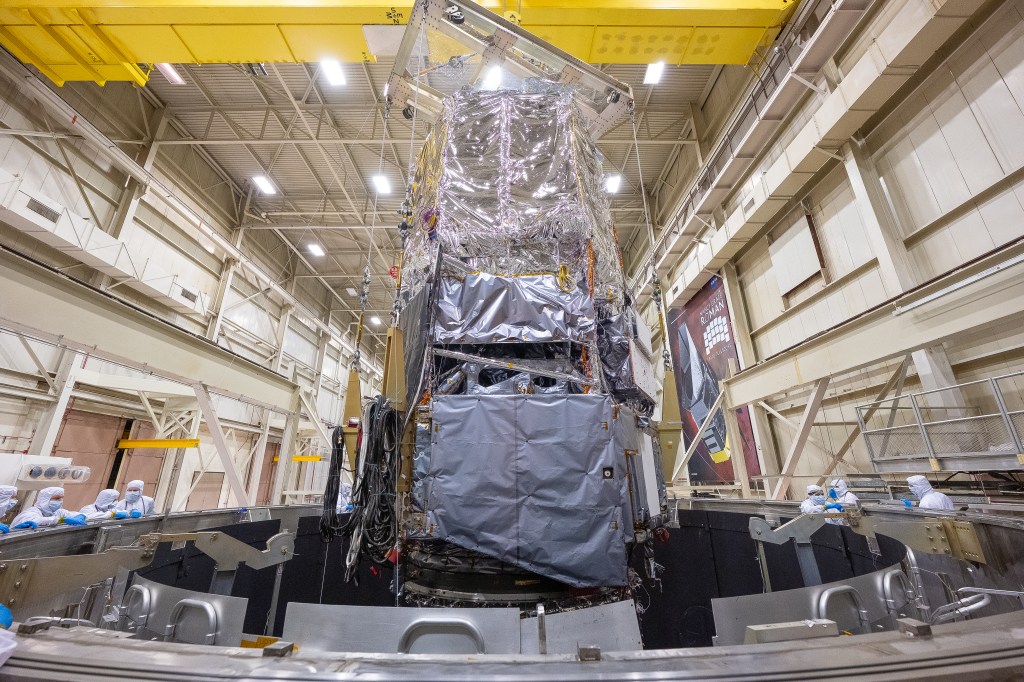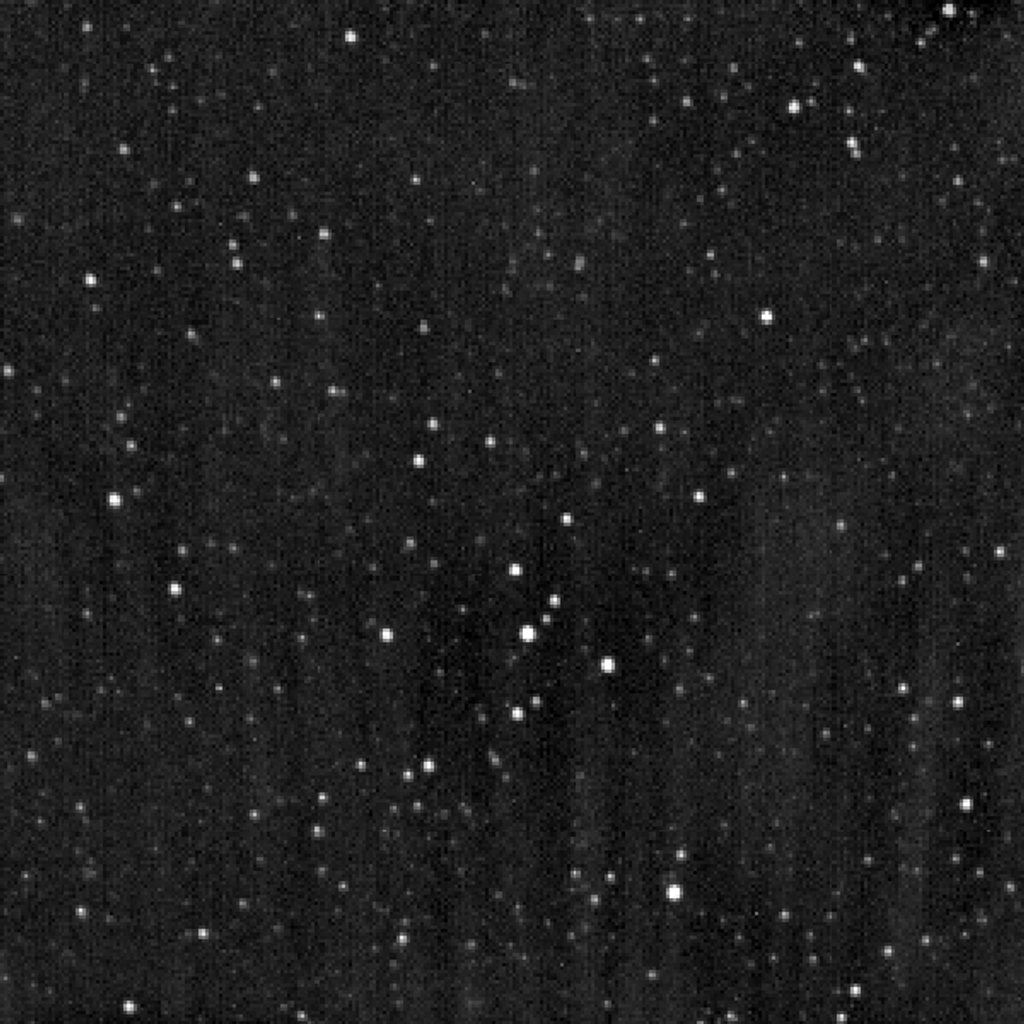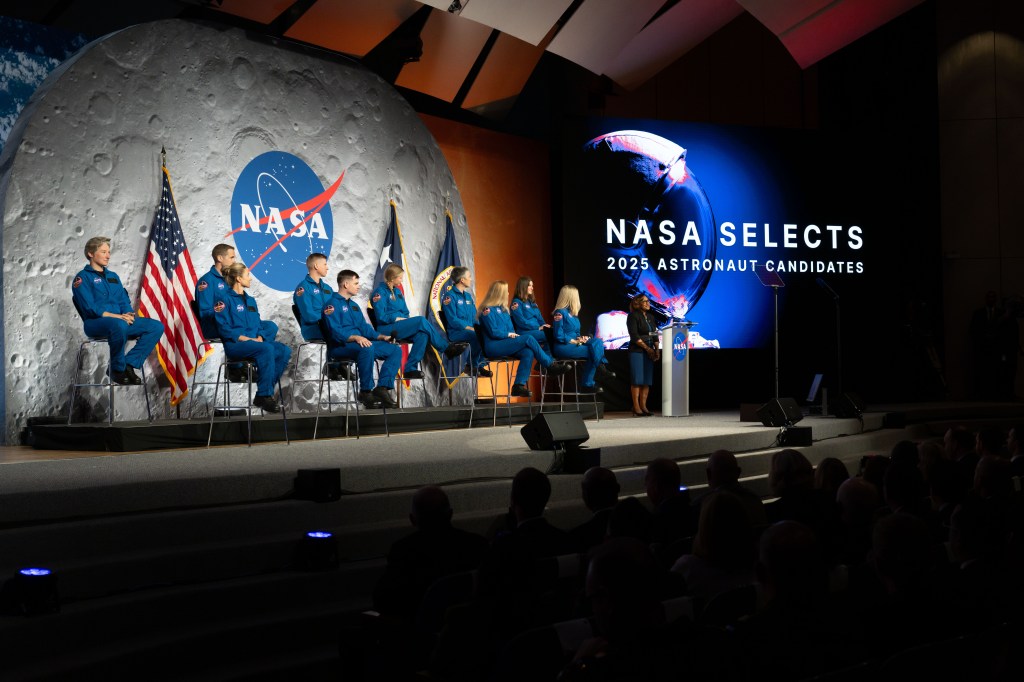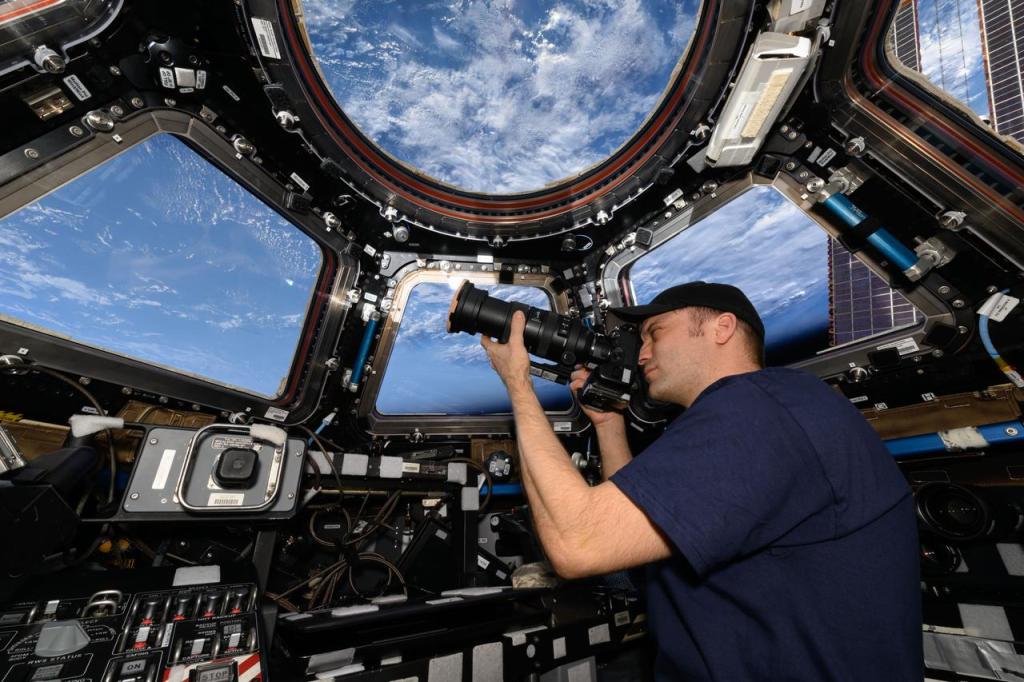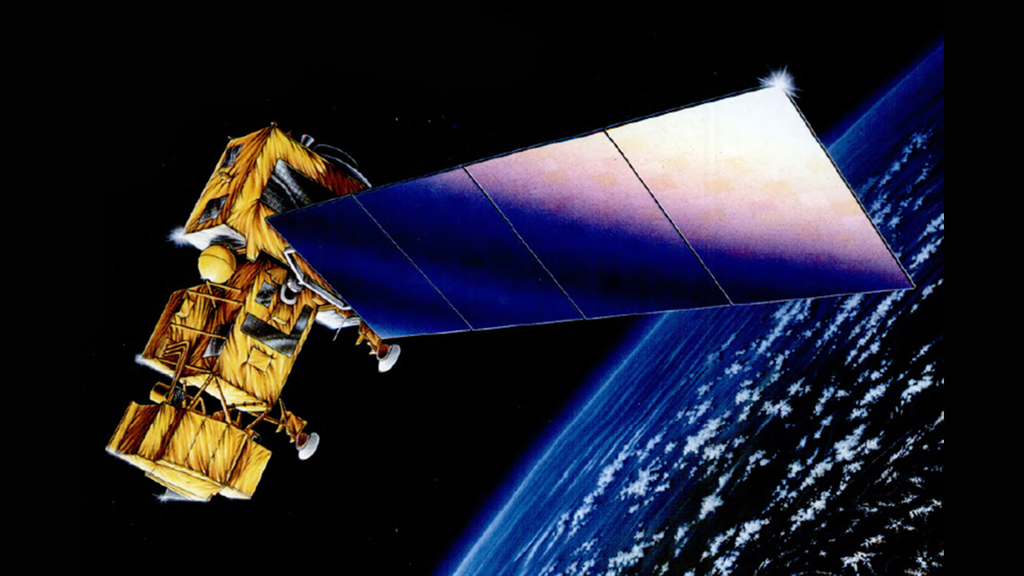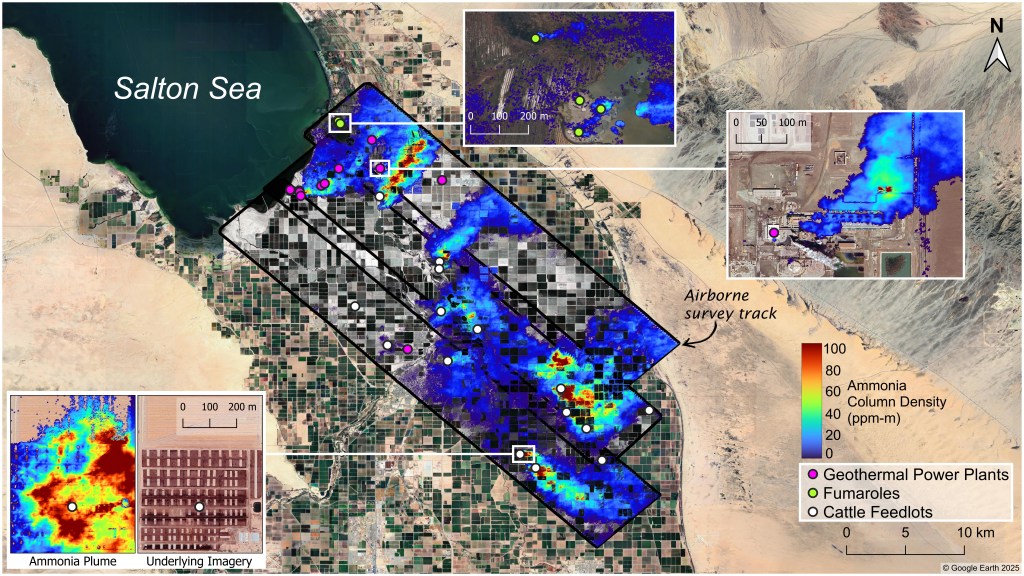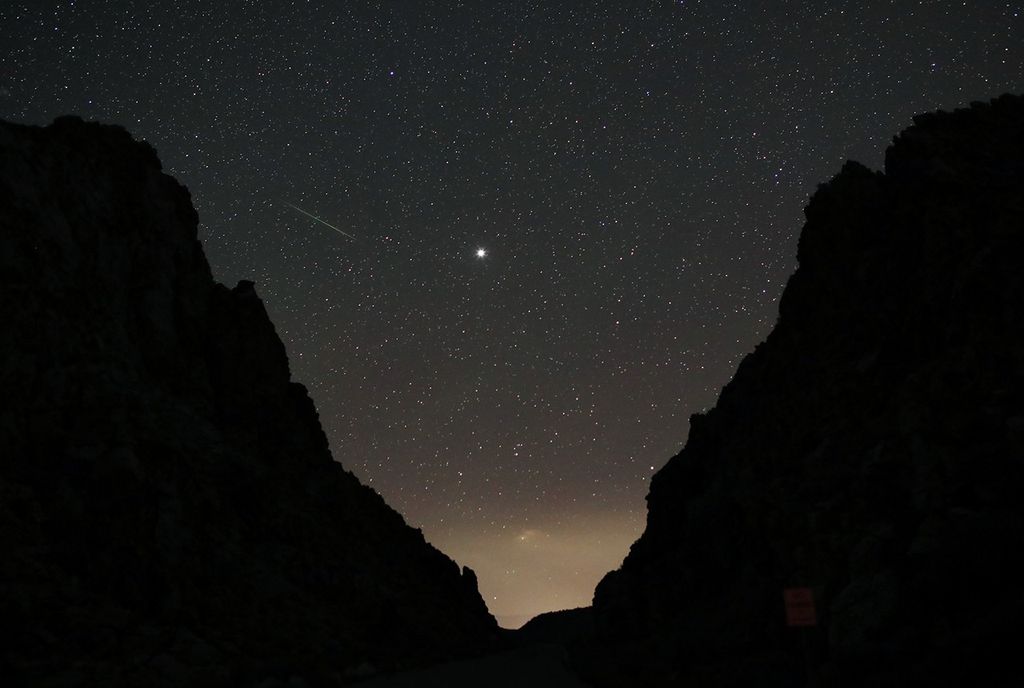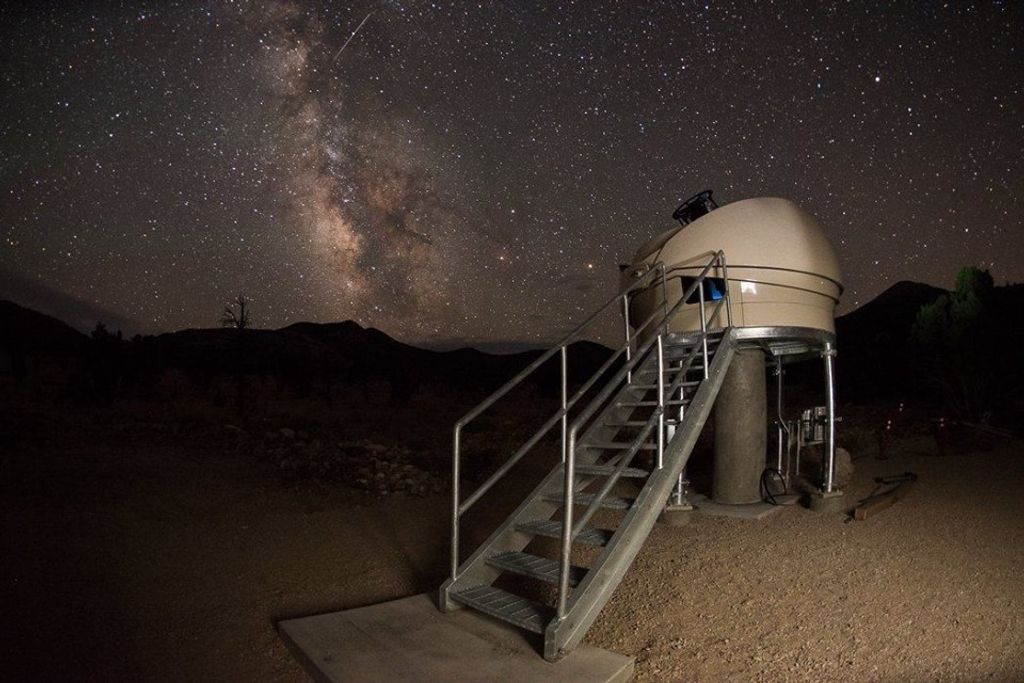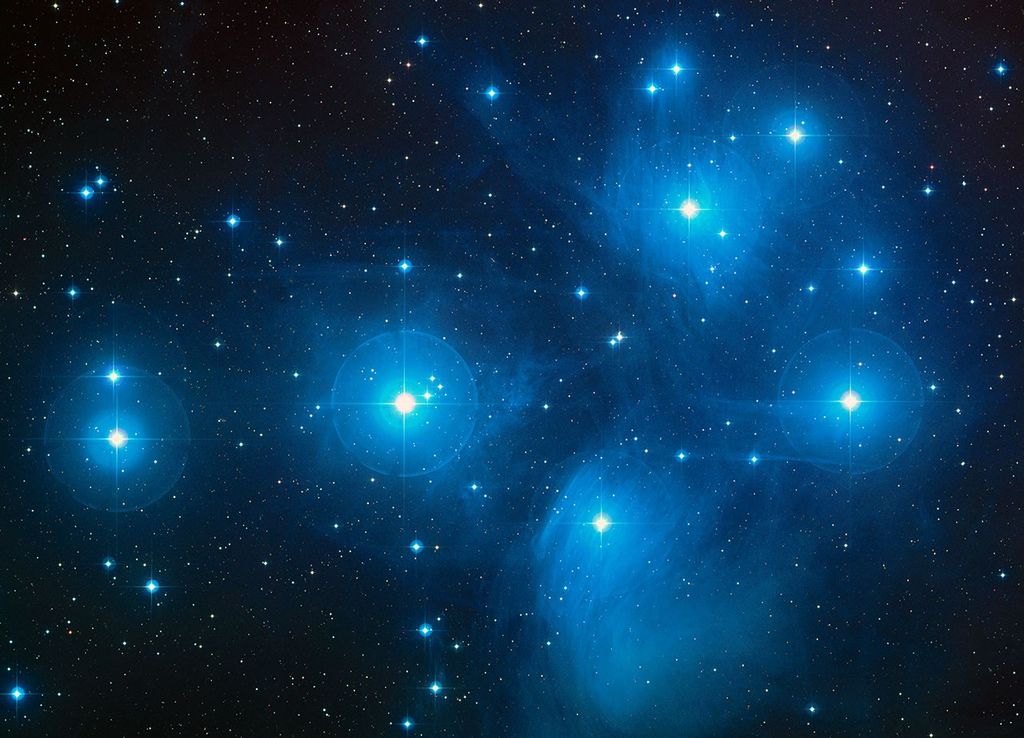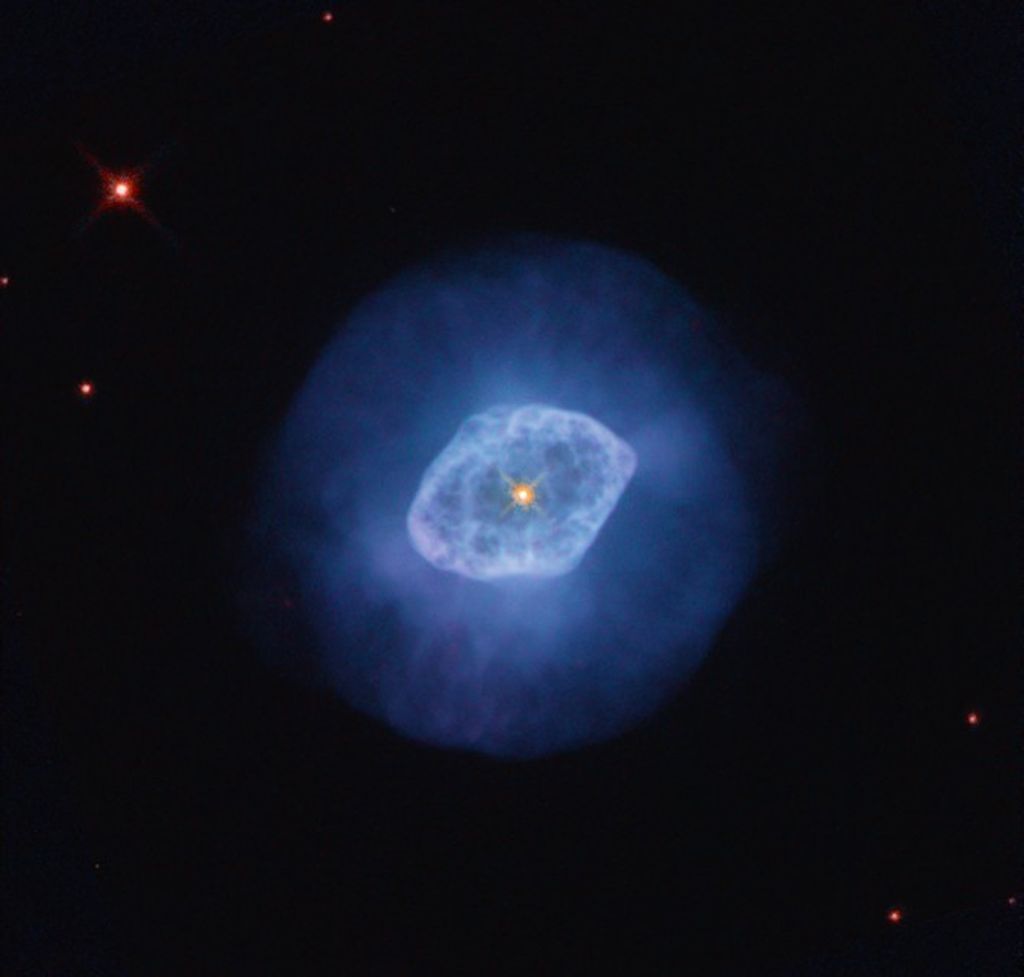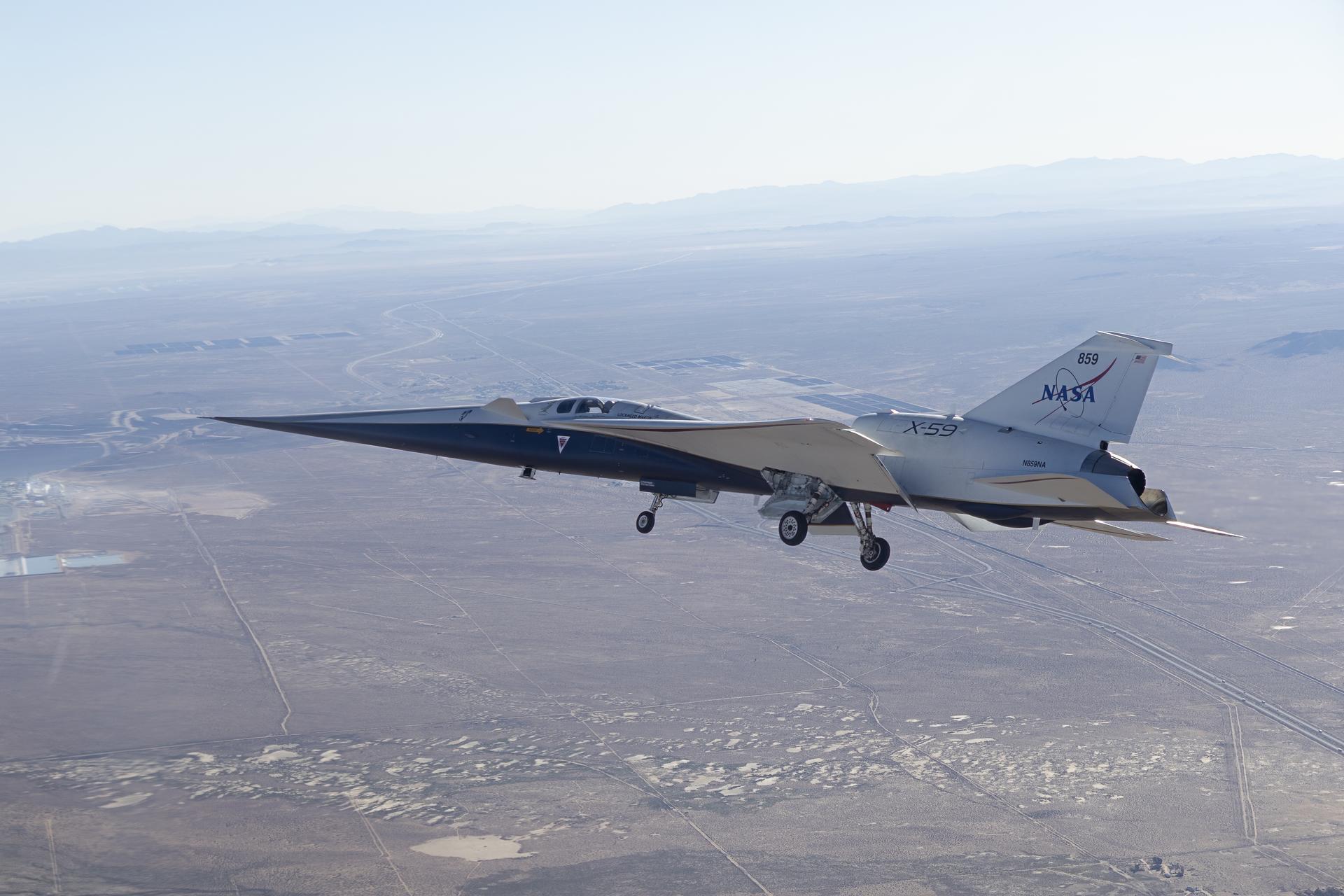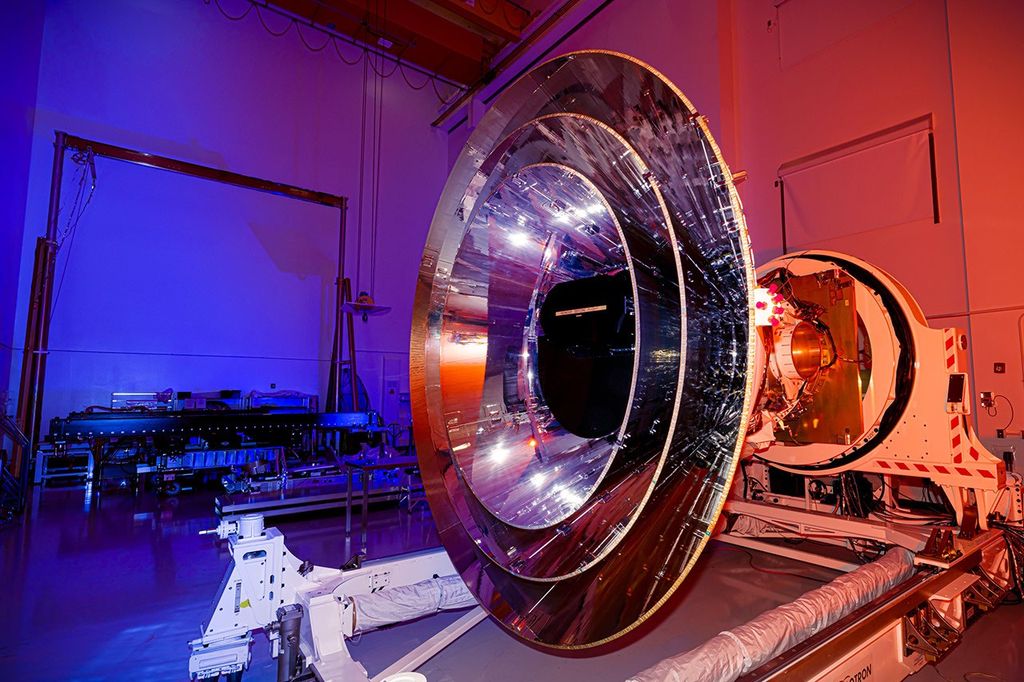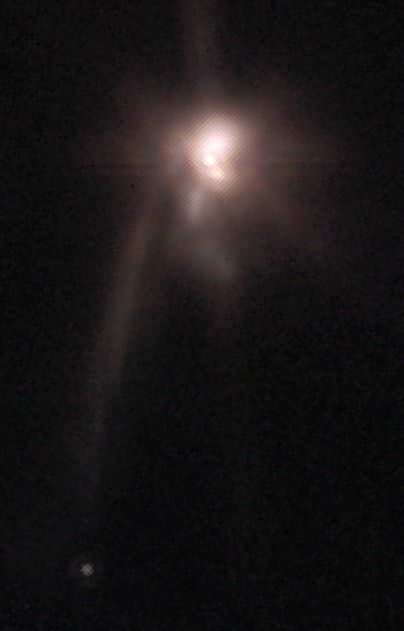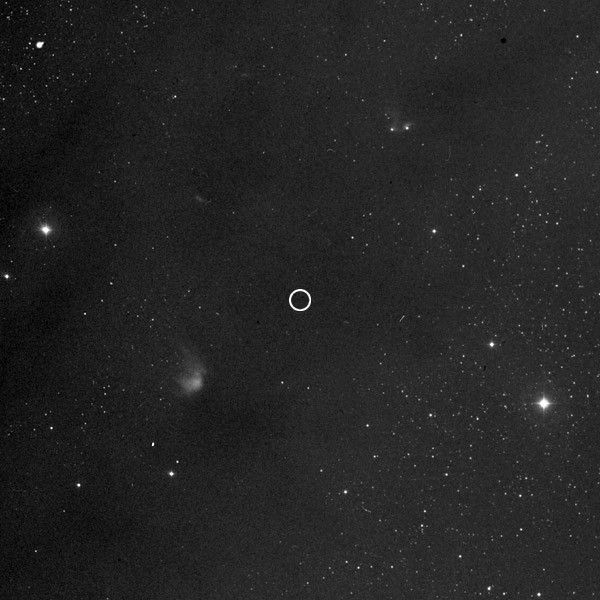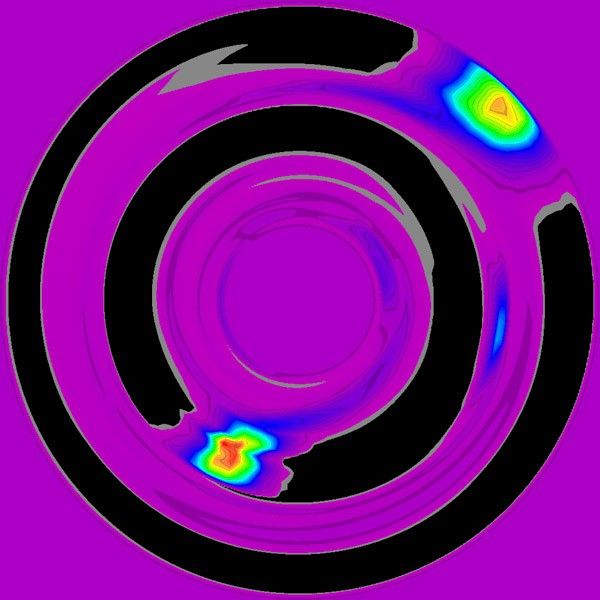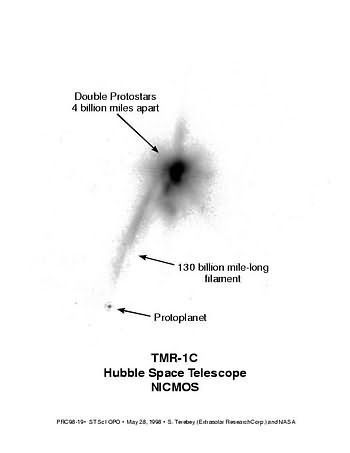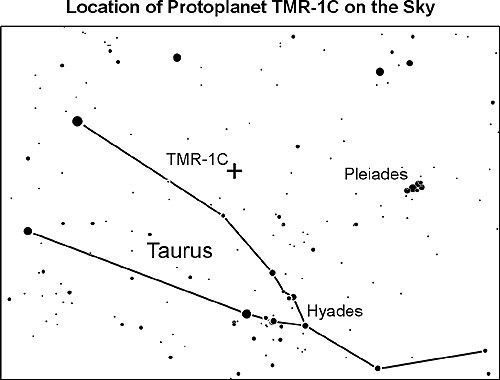NASA's Hubble Space Telescope has given astronomers their first direct look at what is possibly a planet outside our solar system - one apparently that has been ejected into deep space by its parent stars.
The discovery, made by Susan Terebey of the Extrasolar Research Corporation in Pasadena, CA, and her team using Hubble's Near Infrared Camera and Multi-Object Spectrometer (NICMOS), further challenges conventional theories about the birth and evolution of planets, and offers new insights into the formation of our own Solar System.
Located in the sky within a star-forming region in the constellation Taurus, the object, called TMR-1C, appears to lie at the end of a strange filament of light that suggests it has apparently been flung away from the vicinity of a newly forming pair of binary stars.
At a distance of 450 light-years, the same distance as the newly formed stars, the candidate protoplanet would be ten thousand times less luminous than the Sun. If the object is a few hundred thousand years old, the same age as the newly formed star system which appears to have ejected it, then it is estimated to be 2-3 times the mass of Jupiter, the largest gas giant planet in our Solar System.
Also possible is that the object is up to ten million years old, the same age as other young stars nearby, in which case it may be a giant protoplanet or a brown dwarf star. A brown dwarf star is a small star that has failed to sustain nuclear fusion.
The candidate protoplanet is now 130 billion miles from the parent stars and predicted to be hurtling into interstellar space at speeds up to 20,000 miles per hour (10 kilometers/sec) - destined to forever drift among the Milky Way's starry population.
Hubble researchers estimate the odds at two percent that the object is instead a chance background star.
"If the results are confirmed, this discovery could be telling us gas giant planets are easy to build. It seems unlikely for us to happen to catch one flung out by the stars unless gas giant planets are common in young binary systems," said Terebey.
"The results don't directly tell us about the presence of any terrestrial planets, like Earth," she adds. "However, we believe gas giants do influence the formation of much smaller rocky planets."
Current models predict that very young giant planets are still warm from gravitational contraction and formation processes. This makes them relatively bright in infrared light compared to old giant planets such as Jupiter. Even so, young planets are difficult to find in new solar systems because the glare of the central star drowns out their feeble glow. Young planets ejected from binary systems would therefore represent a unique opportunity to study extrasolar planets with current astronomical technology.
The discovery also challenges conventional theories that predict gas giant planets take millions of years to coagulate from dust in space. Instead, it favors more recent ideas that large, low-density planets may condense out of gas very quickly, at the same time their parent star does.
"This observation pushes back the clock on planet formation and offers short time scales which allow us to see how things form. This provides valuable new clues to the origin of our Solar System," says Terebey.
The candidate protoplanet was accidentally discovered by Terebey and colleagues while studying Hubble infrared images of newly formed protostars in a molecular cloud in Taurus. The exquisite sensitivity and sharpness of NICMOS clearly revealed the object's pinpoint image. However, it might have been dismissed as a background star if not for the presence of a bizarre 130-billion-mile-long filamentary structure that bridges the space between the binary pair and the candidate protoplanet.
"I said to myself, 'This is really weird, what in the world could it be?'" recalls Terebey. She speculates it could be a tunnel the runaway object burrowed through a dust cloud surrounding the stars. This created a "light tube" which channels light from the stars deep inside their dusty cocoon - like a light beam traveling through a length of fiber optic cable.
This brought Terebey to the tantalizing possibility that the planet had been flung into deep space by a gravitational "slingshot" effect from its parent stars. This could have happened if the planet's orbit allowed it to rob momentum from the stars and pick up so much speed that it escaped the system, similar to the way spacecraft perform gravitational "slingshot" maneuvers to pick up speed by flying close by a planet.
"We know that many triple star systems eventually toss out the lowest-mass star. And we can predict the speed at which the object should be moving, based on the separation of the binary stars," said Terebey.
Future observations call for images taken at a later date, to confirm the object's predicted movement across the sky. In addition, the spectrum of the object will tell whether the object is a background star, brown dwarf, or something whose spectrum is less easy to predict, such as a giant protoplanet.
"We will just have to wait and see if future observations confirm this picture," said Terebey. "However it turns out, we have come to appreciate that protoplanet ejection by young binary stars ought to happen, and it offers a new way to search for giant planets."
"These future observations will be critical in verifying that this object is truly a planet and not a brown dwarf," said Dr. Ed Weiler, Director of the Origins Program at NASA Headquarters, Washington, DC. "We are sharing this preliminary data with the public at a very early stage in the research process because of its potential importance and because of the compelling nature of the image. If the planet interpretation stands up to the careful scrutiny of future observations, it could turn out to be the most important discovery by Hubble in its 8-year history."
The members of the research team include Susan Terebey (Extrasolar Research Corp.), Dave Van Buren, Deborah L. Padgett, Jet Propulsion Lab, Pasadena, CA (JPL), Terry Hancock (Extrasolar Research Corp.), and Michael Brundage, JPL.
BACKGROUND INFORMATION: TMR-1C: A RUNAWAY PLANET?
Astronomers believe that planets forming around most single stars, like the planets that were born around our Sun, engage in an elegant waltz of creation. In these systems, leftover clumps of gas and dust swirling in a disk around a star meet and coalesce over millions of years. The resulting progeny continue to circle gracefully around their parent stars.
In some double-star systems, however, astronomers predict that planet formation is anything but orderly. In this free-for-all environment, a planet can be created very quickly from the contraction of a clump of gas and dust. But it doesn't stay with its host stars for long. Three's a crowd in the chaotic world of double-star systems. The three objects engage in a Wild West-style saloon brawl, with the planet getting booted out of the barroom window by its more massive companions. Unwilling to suffer another beating, the planet leaves town in a hurry.
Life in some double-star systems can be that brutal, as an image from NASA's Hubble Space Telescope shows of a possible young gas giant planet being ejected from an infant double-star system (TMR-1) in a large stellar nursery in the nearby constellation Taurus. The planet is two to three times the mass of another gas giant, Jupiter. This stunning image is the first snapshot of a possible planet around a star. Since this putative planet is beyond our solar system, it is called an extrasolar planet.
"This is unbelievably exciting, seeing a possible extrasolar planet for the first time," says astrophysicist Alan Boss of the Carnegie Institution of Washington. "This is a major, unprecedented observation. It is as important as the first indirect detection of an extrasolar planet was."
Seeing Could Be Believing
Since 1995, as many as eight planets have been detected around stars, but none were actually seen. These planets were identified indirectly, through measuring how they affected the motion of their parent stars.
Until this Hubble sighting, all of the detected planets have been orbiting middle-aged stars. The Hubble observation is the first peek at a young planet. Studying young planets is important to understanding how planets are created. The image shows that planet formation can occur much faster than astronomers first believed. They support an emerging view that not all planets form slowly and have permanent neighborhoods. Conventional theory holds that first dust and then gas is built up over about 10 million years to create gas giant planets. However, the gas giant planet in the Hubble image evidently took no more than 300,000 years to form. The only way to make a gas giant planet that quickly, Boss says, is to form it directly out of the rotating disk of dust and gas. Such giant planets would then form in a manner similar to the more massive brown dwarfs, which form out of gas and dust, but at an earlier phase. (Brown dwarfs began as star "wanna be's." But they never got quite massive enough to ignite nuclear reactions in their cores, which make stars shine.)
Hubble's gas giant is roughly the same age as the parent stars, about 300,000 years old. Gas giant planets are many hundreds of times heavier than Earth. Earth is small and rocky and is called a terrestrial planet. Because of their larger sizes, gas giants are the only planets that have been discovered so far.
More Than One Way to Make A Gas Giant
Boss is an advocate for the fast-track method of making gas giants, at least in some cases. "If this is a planet and the system is about 300,000 years old, then the slower, conventional theory doesn't fit. It's like Cinderella dropping her glass slipper after the ball. That slipper is only going to fit one person. In the same way, I think the fast-track theory is the only fit for explaining the formation of this new planet."
The astrophysicist, however, thinks that other gas giants, like Jupiter, might still have formed from the conventional, old-fashioned way.
Fertile Breeding Ground
Boss also believes that double-star systems may be conducive to making planets, or at least are not as dangerous to the health of young planets as was once suspected. Out of the eight or so extrasolar planets detected so far, half have been found in double-star systems. Although these systems may be fertile breeding grounds for planets, they aren't necessarily a good environment for keeping planets. The astrophysicist thinks the planet seen by Hubble formed about as far away from one of the stars as the gas giant planets in our solar system, which are about one-half to 1 billion miles away from the Sun. As the young planet orbited around one of the stars, the second star disturbed the planet's orbit, and the planet came a little too close to one of them. The planet picked up energy from the two stars and got catapulted out of the system. It is now zipping away from the host stars at a speed of 48,000 mph (20 kilometers per second).
Lone Planets
The ancient Greeks called planets "wandering stars" because of their movement with respect to the "fixed" stars, as the planets orbited the Sun. Perhaps these civilizations weren't far off the mark. The planet seen by Hubble is destined to be a wandering nomad in space. Boss wonders how many other nomadic planets there are in the rich, star-forming region of Taurus. He guesses that for many binary stars in the constellation, a gas giant planet or two could have been kicked out of their homes, destined to roam space alone.
"It takes about 10,000 to 100,000 years for a planet to be ejected from a two-star system like this one," Boss says. "Who knows? Maybe this double star [in the Hubble image] has kicked out a gas giant before this one. This is just one possibility that astronomers will look for when they begin to do the follow-up observations on this major discovery."
The wandering nature of the gas giant in Taurus also reinforces the idea that some gas giants migrate. The planet in the Hubble image traveled out of its star system, but earlier detections of extrasolar planets pinpointed gas giants that apparently moved closer to their stars, because of gravitational interactions between the planet and the disk or with other planets in the system.
Blurring The Lines Between Brown Dwarfs and Gas Giants
A lone planet on the fast track to maturity. The Hubble image offers tantalizing clues about how gas giants are formed in the wacky world of binary star systems. But information gleaned from the image also poses a perplexing question: Is there any difference between a brown dwarf and a gas giant? The answer: perhaps not in the way they are created. Boss explains the difference between the two may be all in the timing. In double-star systems, brown dwarfs and stars are born at the same time from the collapse of dust and gas clouds. Gas giants are formed later from the "table scraps" of material. Once formed, brown dwarfs have eccentric, non-circular orbits around host stars. Of the gas giants and brown dwarfs detected so far, Boss notes that all those with more than about four times the mass of Jupiter have eccentric orbits and seem to be brown dwarf stars, while all those with masses below four Jupiter masses (with one exception), have circular orbits and seem to be gas giant planets.
Hunting For Planets
The bulk of the planet-hunting work has been done using indirect methods of observation. As a planet orbits a star, it exerts a gravitational force that causes a star to wobble back and forth. One way to identify this wobble is by measuring the change in a star's spectrum caused by the Doppler effect. As a star moves toward Earth, its light shifts toward the blue end of the spectrum (blueshift); away from Earth, toward the red end (redshift). This repeated movement from blue to red tells astronomers that the star is being pulled by an unseen object. Another method is astrometry. A star drifts very slowly across the sky. Normally, a star moves in a straight line. But gravitational forces from an unseen companion will cause a slight wiggle in the star's motion.




